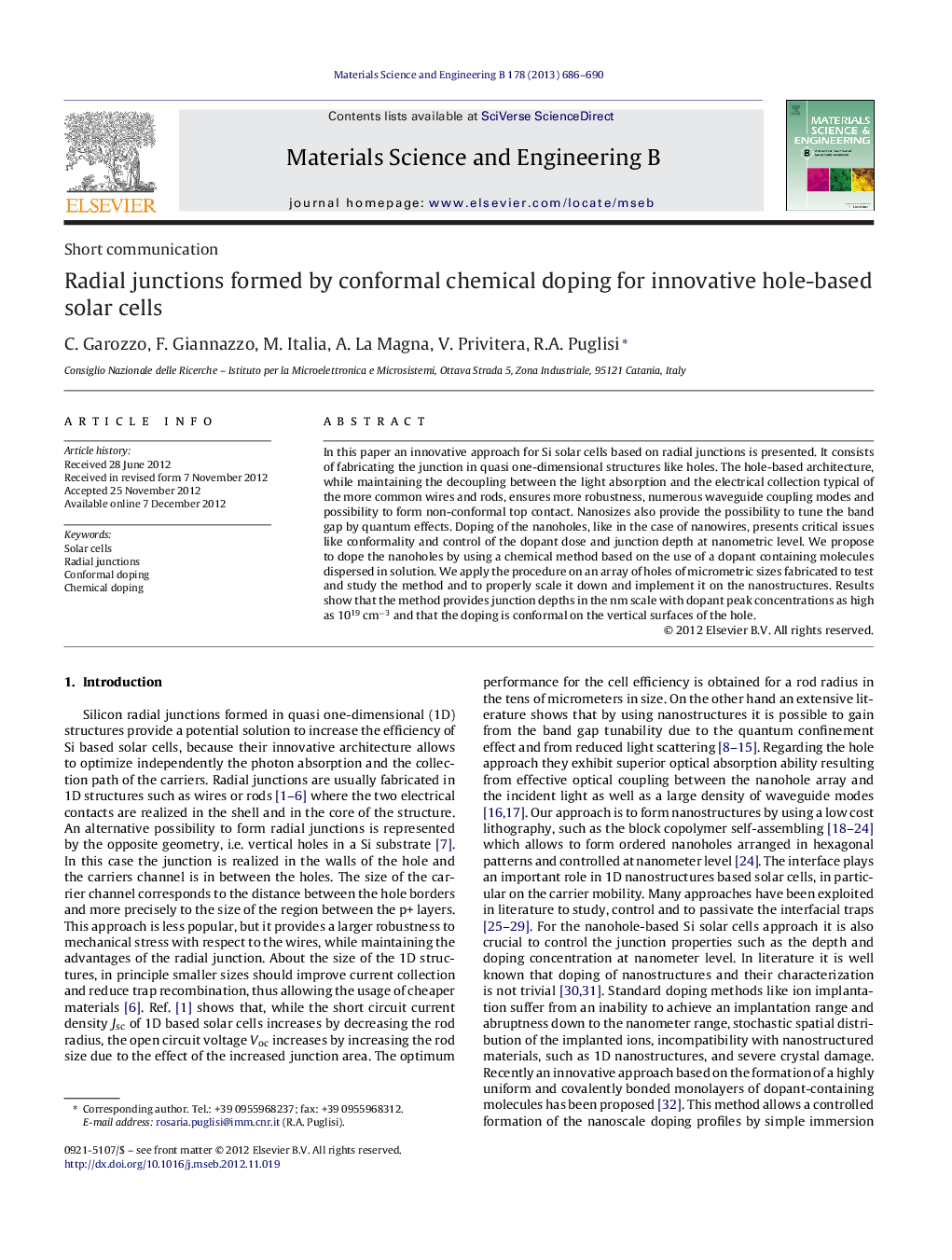| Article ID | Journal | Published Year | Pages | File Type |
|---|---|---|---|---|
| 10639903 | Materials Science and Engineering: B | 2013 | 5 Pages |
Abstract
In this paper an innovative approach for Si solar cells based on radial junctions is presented. It consists of fabricating the junction in quasi one-dimensional structures like holes. The hole-based architecture, while maintaining the decoupling between the light absorption and the electrical collection typical of the more common wires and rods, ensures more robustness, numerous waveguide coupling modes and possibility to form non-conformal top contact. Nanosizes also provide the possibility to tune the band gap by quantum effects. Doping of the nanoholes, like in the case of nanowires, presents critical issues like conformality and control of the dopant dose and junction depth at nanometric level. We propose to dope the nanoholes by using a chemical method based on the use of a dopant containing molecules dispersed in solution. We apply the procedure on an array of holes of micrometric sizes fabricated to test and study the method and to properly scale it down and implement it on the nanostructures. Results show that the method provides junction depths in the nm scale with dopant peak concentrations as high as 1019Â cmâ3 and that the doping is conformal on the vertical surfaces of the hole.
Keywords
Related Topics
Physical Sciences and Engineering
Materials Science
Electronic, Optical and Magnetic Materials
Authors
C. Garozzo, F. Giannazzo, M. Italia, A. La Magna, V. Privitera, R.A. Puglisi,
